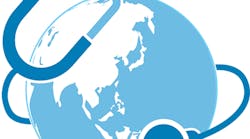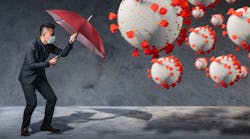In an effort to clear the way for the identification and removal of blockages in the production and distribution of supplies critical to addressing COVID-19, on May 28, The Asian Development Bank (ADB) released a study that maps supply chains for critical products.
The interactive maps were created to enable healthcare professions, governments, banks and investors to pinpoint key companies in the supply of portable ventilators, N95 respirators, face shields, goggles, aprons, surgical masks, and gowns. The maps consider the elements of each product down to its component metals and fabrics.
“To fix any supply chain problems, we need an in-depth description of what goes into these products and which companies are involved,” said ADB’s Head of Trade and Supply Chain Finance Steven Beck. “Mapping these supply chains means that if help is needed, banks, investors, and governments can use the data to quickly relieve bottlenecks and ramp up supplies.”
The mapping project feeds data that already exists from many sources into an algorithm that sorts the information by applying various industry and product codes. Until now, that data has existed in multiple forms on a variety of separate databases, but never brought together in a user-friendly format. A future phase of this initiative will look at blockages at ports, tariff requirements, and other impediments to the efficient functioning of supply chains for these critical goods.
Earlier on April 13, ADB announced a tripling in the size of its response to the pandemic to $20 billion. The package expands on the $6.5 billion initial response announced on 18 March, adding $13.5 billion in resources to help ADB’s developing member countries counter the severe macroeconomic and health impacts caused by COVID-19.



